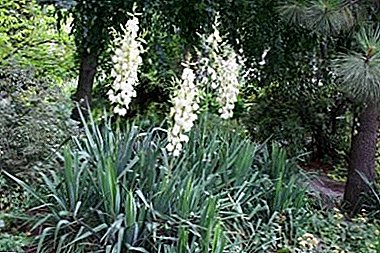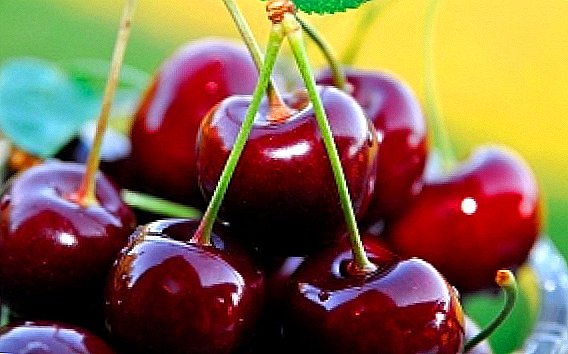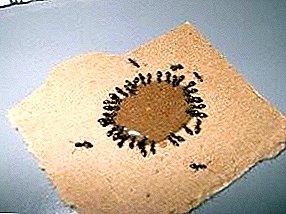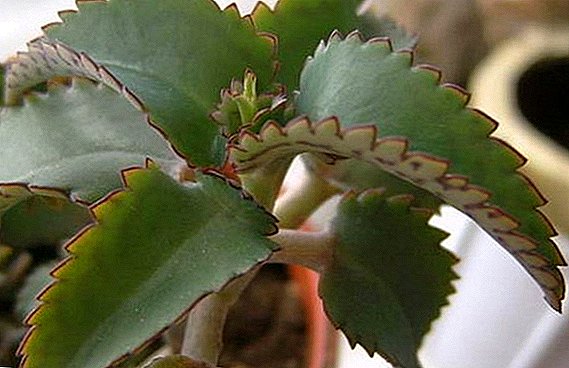 Kalanchoe is a genus of herbaceous succulent plants, with a large number of species. In the wild, they grow in the tropics and the southern part of the African continent, in the south and southeast of Asia and in the tropical belt of South America. These plants are well known to Europeans due to their medicinal qualities, but for decorative purposes they have been used relatively recently. We will talk about the most popular decorative types of Kalanchoe and about their care.
Kalanchoe is a genus of herbaceous succulent plants, with a large number of species. In the wild, they grow in the tropics and the southern part of the African continent, in the south and southeast of Asia and in the tropical belt of South America. These plants are well known to Europeans due to their medicinal qualities, but for decorative purposes they have been used relatively recently. We will talk about the most popular decorative types of Kalanchoe and about their care.
What does a flower look like
Each type of decorative Kalanchoe looks different, but there is something that unites them. First of all, it is juicy and fleshy leaves and stem. In most species, the stems are erect, the leaves are petiolate or sessile, different in shape, with a smooth or jagged edge. Reproduction occurs by cuttings, seeds and brood buds.
Here is a more detailed description of several popular species:
- Kalanchoe Blossfeld. Compact plant no more than 30 cm in height. It has rounded leaves with wavy edges. It has a rather long flowering period: from winter to late spring.

- Kalandyva. This species is popular for its lush blooming. Inflorescences form a dense cap. The flowers are small, with lots of petals. Duration of flowering - up to six months. The leaves are large, rounded with wavy edges, rich green color.

- Pinnate. The flower has a long stem with oblong leaves, with pronounced teeth along the edges. At the end of the stem - inflorescence panicle with tubular flowers. Blooms in all shades from red to purple. The color of the foliage is green or green and may have a purple tint.

- Degremona. The main feature of this species - the ability to grow "kids" at the edges of the foliage. Like the feathery Kalanchoe, it has a long stem with arrow-shaped leaves of a saturated green color. Young leaves bend inside, forming a groove in the center. Over time, the sheet bends in the opposite direction and twists a sharp edge beneath it. The flower grows very intensively.

Did you know? Representatives of the species Kalanchoe laciniata, possessing bright golden flowers, in India received the name "hemasagar", that is, the "sea of gold".
Some species of Kalanchoe (for example, trumpet-flower) are poisonous to animals.
Competent care
The plant is unpretentious, but since it is imported from tropical latitudes, it requires similar climatic conditions in its habitat.
Learn how to grow a healthy and beautiful flower Kalanchoe, as well as learn about the healing properties of this plant.
Lighting Requirements
Kalanchoe is a light-loving flower, but does not tolerate exposure to direct sunlight. Therefore, it is best to place it in the summer on the western or eastern windows, and in the winter - on the south.
Some sources claim that in the light the plant can be kept only in the first half of the day, and after lunch it is necessary to move it in the shade or cover it with something. Others, on the contrary, argue that for abundant flowering it should be in the light within 12 hours. 
The correct solution is to keep the flower in a well-lit place, but at the same time protecting it from direct sunlight.
Optimal temperature
The flower tolerates high temperatures, up to 35 ° C. But if the thermometer shows below 10 ° C, the growth will slow down and the flowering period will shift.
How to water Kalanchoe
Poor tolerate abundant watering. If the roots will lock, the plant will start to rot. To avoid this, it is necessary to water the flower every three days and not very plentifully. If the excess water stacks into the pan, it should be immediately poured. Water preferably desiccated water.
It is necessary to take into account the fact that Kalanchoe does not like humid air. 
Important! When watering, try to prevent water from falling on the leaves and stem, otherwise fungal disease will develop.
Correct pruning
For plants characterized by intensive growth up. Therefore, in order to have an attractive look, it is necessary to regularly carry out formative pruning. Do not be afraid to experiment. The flower tolerates pruning easily and is quickly restored.
Like Kalanchoe, succulents include such plants as hoya, pachypodium, ripsalis, euphorbia, mesembryanthum, staphelia, mammylaria, echeveria, lithops, hatiora, havortia, agave, nolin.
Crop young shoots are recommended in the spring. If it is characteristic of a flower to produce very long stems, they are pruned by 2/3 or 1/2. Preventive pruning is carried out after flowering.
In order for a young flower to grow better, it is not only clipped, but also pinched. It helps to quickly take a beautiful shape. Carry out this procedure in the early summer. 
How to feed Kalanchoe
Feed and fertilize need only special fertilizers for succulents. The procedure should be carried out at the end of spring or in the middle of summer. On the packaging of fertilizers prescribe the amount of fertilizing required for the flower, as well as how often to feed the plant. It is necessary to use half of the indicated dose of fertilizer.
Important! Before you apply fertilizer, it should be diluted in warm water and wait until it cools. This is necessary for better absorption of fertilizer roots.
Transplant features
It needs transplanting only when the pot becomes small for growing roots, or when the soil turns sour due to the abundance of moisture. There is a transplant at the end of spring.
The plant is carefully removed from the old pot and, together with a small amount of soil, is placed in a new one. In order for the plant to settle down faster, the new soil must be similar to the old one. Also need feeding. The adaptation period takes about a week.
Transplant Kalanchoe: video
The main errors of care: why does not Kalanchoe bloom
Usually flower growers prefer Kalanchoe because of its abundant flowering. Having chosen the plant in the store, many people note that the next flowering period is less intense or absent altogether. Do not think that you have sold the wrong flower. Need to revise the rules of care for him.
Why does not bloom
As a rule, Kalanchoe stops blooming due to the large amount of fertilizer applied to the soil. Begin gradually reduce the amount of feeding, until you reduce it to zero.
Find out why Kalanchoe does not bloom.Another reason for the lack of flowering - excess moisture and improper watering. Try to water the plant less. Drought is less scary than high humidity. And you need to water only separated water at room temperature.
 Sometimes the reason for the lack of flowering can be a long stay in the light. Shorten artificial daylight hours. Make the night last for Kalanchoe 12-14 hours.
Sometimes the reason for the lack of flowering can be a long stay in the light. Shorten artificial daylight hours. Make the night last for Kalanchoe 12-14 hours.What to do: how to make Kalanchoe blossom
If you properly cared for Kalanchoe, and it does not bloom, try this:
- Trim old peduncles.
- When the shoots start to grow, pinch the top two leaves on them. If the tip is very stretched, cut it.
- When new shoots with three pairs of petals appear at the pinch points, cut them off. This pruning will form a dense plant bush. Last pinching done in November.
- Now the flower needs a short and bright light day. The plant is artificially sent to sleep, covering it with a cloth.
- After some time, flowering shoots should appear. If they are not there until March, we pinch the plant again.

Did you know? The people of Kalanchoe are often called the "tree of life" or "room doctor".
As you can see, Kalanchoe - unpretentious plant. But if you do not follow the basic rules for caring for him, it will not please you with abundant flowering. Take care of it, and Kalanchoe will thank you with placers of bright colors.
Feedback from network users
















